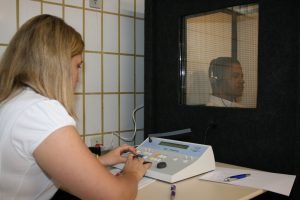The coronavirus (Covid-19) pandemic has stunned the entire world. It has affected millions of people across the world in terms of health, business, and economy. The year 2020 is a desperate time for healthcare organizations and professionals.
Although the concept of Telehealth is there for quite some time, its significance has increased during the pandemic. Changes in the health systems are the need of the hour to reduce staff exposure to infected patients and preserve personal protective equipment (PPE).
The purpose is to minimize the effects of patient surges on healthcare facilities. Most healthcare systems have had to make adjustments in the evaluation and care for patients using advanced techniques that do not rely on in-person health services.
Telehealth services are of great importance in providing adequate care to patients. At the same time, it minimizes the transmission risks of coronavirus that causes Covid-19 disease to patients and healthcare professionals.
Although the technology is not new, its widespread adoption among health professionals and patients has been relatively slow before Covid-19. Recent policy changes during the pandemic have eliminated barriers to telehealth access. New policies promote the use of such a service as a method to deliver primary, acute, chronic, and speciality care.
Many health systems, including hospitals and clinics, endorse telehealth services and guide medical practices in this evolving landscape. It is crucial to know that telehealth services can improve health outcomes for patients during Covid-19.
What is Telehealth?
Telehealth involves the use of advanced technology tools that allows patients to connect or communicate with health providers through telephone, email, digital monitoring, and video apps without leaving their homes.
Telehealth services that use the telephone allow for two-and-three-party calling. Using video apps like Skype and Zoon, health professionals can listen, look, and engage with the patient to evaluate his health issues and provide an effective treatment plan.
Health professionals can also guide patients virtually through a physical assessment of signs and symptoms. The same applies to digital monitoring for patients with acute and chronic health conditions.
Digital monitoring is an advanced technology used for the collection and transmission of data, including sugar count or vital signs from the patient to a health team. Doctors, physicians, or nurses will then follow up with the individual with health recommendations.
Health professionals can provide telehealth services in a variety of settings, such as the patient’s home, nursing homes, hospital outpatient departments, and assisted living facilities. Let us delve deep into the subject of Telehealth. Continue reading!
What are the Modalities of Telehealth?
Telehealth offers several modalities that allow professionals and patients to communicate effectively, using technology tools to deliver healthcare. These modalities include synchronous, asynchronous, and remote patient monitoring.
Synchronous
Synchronous Telehealth involves real-time telephone and audio-video communication between health providers and patients using computers, smartphones, and tablets. In some situation, peripheral medical equipment, such as digital otoscopes, stethoscopes, and ultrasound can be used by medical assistant and nurses with the patients, while the consulting doctor conducts a remote evaluation.
Asynchronous
Asynchronous is a telehealth modality that focuses on the “store and forwards” technology used by health professionals to collect messages, images, and other data to interpret and respond later. Asynchronous Telehealth includes patient portals that can facilitate this type of communication between doctors and patients through private and secure messaging.
Remote Patient Monitoring
It is another important modality of Telehealth used by health care providers. It involves remote patient monitoring that allows for direct transmission of the patient’s clinical measurements from a distant place to their health providers. Benefits of this modality include ease of access to patients’ data, delivery of high-quality care to patients with reduced risks of burnout for doctors, higher efficiency, and lower costs.
Benefits of Telehealth Services during Covid-19
Telehealth services can successfully facilitate public health mitigation policies during the Covid-19 pandemic by encouraging people to practice social distancing. It is a safe service for health professionals and patients because it reduces potential infectious exposures.
Telehealth services minimize the strain on hospitals and clinics by reducing the surge of patient demand on facilities and lower the use of personal protective equipment by doctors and nurses.
Besides, these services can maintain continuity of care for patients and avoid additional negative consequences from delayed routine, preventive, and chronic care. Remote access to hospital and clinics increase participation for people who are medically and socially vulnerable. Also, it is a viable option for those who have ready access to doctors.
Moreover, remote access helps preserve the doctor-patient relationship in situations when an in-person visit is not feasible or practical. Health professionals use telehealth services to screen patients with symptoms of SARS-CoV-2 and refer as appropriate.
The service is also used to provide urgent care for non-Covid-19 health conditions and identify patients who need medical assessment. Telehealth services help patients to access primary care doctors and specialists, including behavioral and mental health, for chronic diseases and medication management.
Another benefit of telehealth technology is providing coaching and support to patients to manage chronic disorders, including nutritional and weight management counseling. Videoconferencing tools can be used to guide patients on occupational therapy and physical therapy. Telehealth also enables health professional to follow up with patients after hospitalization during the pandemic.
The service allows doctors to deliver advanced care planning to patients or caregivers to document preferences if a medical crisis or life-threatening event occurs. Telehealth also facilitates education and training for health providers through peer-to-peer medical consultations, which are not locally available, especially in rural areas.
What Strategies are employed to Increase Telehealth Uptake?
Health departments in the U.S, the UK, Canada, Australia, Germany, and other advanced countries are making substantial efforts to promote and optimize telehealth services. The purpose is to make them safe for health professionals and patients using frameworks that provide both Covid-19 and non-Covid-19 clinical care.
That way, health professionals can determine the need for in-person visits. Experts recommend hospitals and clinics to include options for language interpretation if needed. It is essential to communicate with payers and insurers to know the availability of covered telemedicine, Telehealth, and nurse advice line services.
Moreover, healthcare providers can use telehealth methods to assess and care for all patients to minimize the number of patients seeking care in hospitals, especially during Covid-19, where the infection rates are rapidly increasing. Hospitals and clinics can streamline technology and connectivity by implementing tools for video consultation.
Is Telehealth Service the Best Alternative during Covid-19?
During the Covid-19 pandemic, people using telehealth services can protect themselves and their loves ones from exposure to the deadly virus. Even if a person is asymptomatic but needs treatment for a non-Covid-19 health condition, such as stress, diabetes, back pain or any other disorder, he or she can use the telehealth service to communicate with the provider.
That way, he or she can avoid the potential spread of Covid-19. When you use telehealth service, you are minimizing strain on the overwhelmed health system. Everyone needs to play a crucial role in reducing pressure on hospitals and clinics by following social distancing.
With telehealth services, people can enable healthcare providers in quarantine to continue treating patients by avoiding unnecessary hospital visits. At the same time, they are freeing up the health staff to be dispatched at Covid-19 quarantine centers or deployed at hospitals with more Covid-19 patients.
Is Telehealth only for patients with Covid-19?
The simple answer is “No.” Telehealth services can address a wide range of health conditions. For instance, if a person is sick with SARS-CoV-2 or thinks he or she might have an infection, it is essential to call the doctor first.
A telehealth visit cannot diagnose a Covid-19 infection. However, doctors can guide people on self-care and quarantine tips. Health professionals can also educate people about the signs for when they need an in-person visit.
People can access telehealth services from their health providers for various health concerns, including minor injuries, illness, and symptoms of an acute or chronic condition. If people want to seek treatment for general health disorders or routine care, such as follow-up appointment, they can use telehealth services.
Moreover, these types of services can also be used for mental health conditions, including stress, depression, anxiety, insomnia, and bipolar disorder. Remember, telehealth services are a great alternative during Covid-19, especially for non-emergency care.
Which Health Professionals use Telehealth?
Telehealth services are offered by primary care, urgent care, mental health providers, and specialists who treat acute and chronic conditions. The main goal is to make efforts keeping healthy and sick people from visiting the health professional’s office in person.
Many countries have allowed doctors, physician assistants, nurse practitioners, certified nurse-midwives, clinical psychologist, social workers, nutrition professionals, and registered dieticians to offer telehealth services to their patients during Covid-19.
How can Patients begin using Telehealth?
It is crucial to check your medical insurance policy and contact your doctor to figure out if he or she offers Telehealth or telemedicine service. The Covid-19 pandemic is a public health emergency, which entails doctors to guide their patients on social distancing protocols.
During this health emergency, many hospitals and clinics have implemented technology tools like Skype, Zoom, FaceTime, and other apps to communicate with patients. You can contact online health professionals available for a virtual visit if you don’t have an established health provider.
Bear in mind that some online providers experience longer waiting times due to higher demands. Many people ask an important question: can doctors write prescriptions through Telehealth? Well, yes, they can send new prescriptions to your local pharmacy based on the diagnoses during your telehealth visit.
Is Telehealth Secure?
According to HIPPPA, Telehealth is a private and secure service that allows a person to safely and confidentially consult a doctor as he or she would in person. During Covid-19, penalties for violations against doctors using simple tools like Skype and FaceTime to serve patients in good faith allow more people to benefit from such services. The bottom line is that yes, these services are safe.
What is the Cost of Telehealth?
During Covid-19, many health insurance companies have taken action to reduce or remove cost barriers to seeking treatment through telehealth services. Many countries are introducing new laws that would require private insurers to cover telemedicine or Telehealth for lower costs than in-person services. The exact cost of telehealth service varies from hospital to hospital or provider to provider.
চূড়ান্ত শব্দ
The number of Covid-19 cases is increasing every day. Hundreds of thousands of people have died of SARS-CoV-2 since January 2020. While governments across the world are making efforts to cope with the situation, telehealth services have found useful during the pandemic.
Telehealth or telemedicine involves the use of advanced, cutting-edge technology gadgets, tools, and apps to access health service remotely. The purpose is to maintain social distancing and minimize the risk of spreading the virus.



